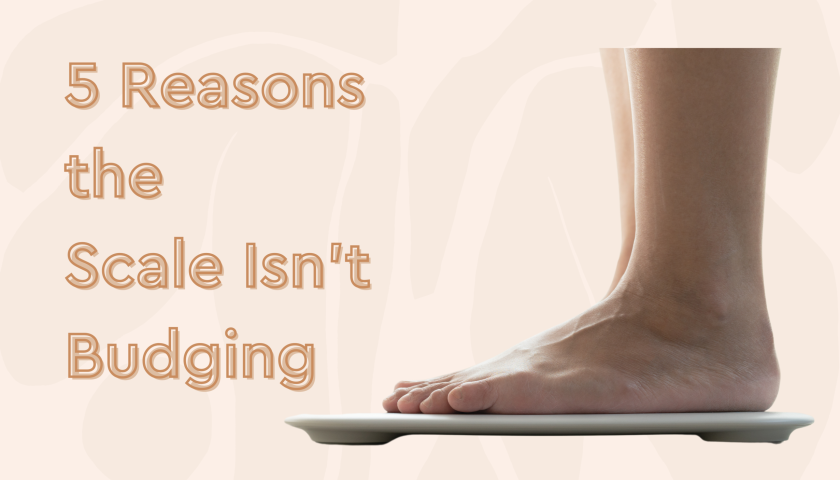By: Javid Amin
Smartphones have become an integral part of our lives, connecting us to a vast digital world. However, this technological marvel has also given rise to a concerning phenomenon – smartphone addiction. This addiction affects people of all ages, from kids to adults, leading to a disconnection from the real world, an increase in social crises, health hazards, and mental stress. In this article, we delve into the details of smartphone addiction, its implications, and the need for mindful usage.
The Impact on Kids and Adults:
Smartphone addiction is prevalent among both children and adults. Kids are especially susceptible to the allure of digital devices, as smartphones offer a wide range of games, apps, and entertainment options. Excessive screen time can disrupt their social and cognitive development, affecting their interpersonal skills and academic performance. Similarly, adults who are addicted to their smartphones may experience strained relationships, reduced productivity at work, and a diminished quality of life.
Cutting Off from the Real World:
One of the significant consequences of smartphone addiction is the disconnection from the real world. People engrossed in their devices often neglect face-to-face interactions with family, friends, and colleagues. This can lead to feelings of isolation, loneliness, and a lack of social connection. Moreover, excessive smartphone usage in public places diminishes the quality of personal interactions, eroding the social fabric of communities.
Increase in Social Crises:
Smartphone addiction has contributed to a rise in social crises. The constant need for validation on social media platforms leads to comparisons, envy, and feelings of inadequacy. Cyberbullying and online harassment have also become prevalent, impacting the mental well-being of individuals. Furthermore, the dissemination of fake news and misinformation through smartphones has the potential to incite social unrest and polarization in society.
Health Hazards:
Extended periods of smartphone usage can have detrimental effects on physical health. Prolonged screen time can lead to sedentary behavior, resulting in a lack of exercise and an increased risk of obesity. Additionally, poor posture while using smartphones can cause musculoskeletal problems, including neck and back pain. The exposure to blue light emitted by screens may disrupt sleep patterns, leading to sleep disorders and fatigue.
Mental Stress:
Smartphone addiction can have severe implications on mental health. Constant notifications, social media pressure, and the fear of missing out (FOMO) contribute to increased stress levels. The over-reliance on smartphones for validation and self-worth can lead to anxiety, depression, and a distorted sense of reality. The constant need for online connection can make it challenging to disconnect and relax, perpetuating mental exhaustion.
In addition to the aforementioned consequences of smartphone addiction, one critical area that gets profoundly affected is family dynamics. The excessive use of smartphones can disrupt the traditional family setup, leading to strained relationships and diminished quality time spent together.
Family members engrossed in their smartphones often become distant, neglecting meaningful interactions with one another. Meal times, once considered an opportunity for family bonding, are now interrupted by constant scrolling and notifications. The lack of attention and engagement can leave family members feeling unheard and unimportant, leading to increased conflict and a breakdown in communication.
Moreover, the addictive nature of smartphones can create a sense of disconnection between parents and children. Parents who are preoccupied with their devices may miss out on important milestones, such as their child’s achievements or struggles. This absence can have a lasting impact on the emotional well-being and development of children, who require parental support and guidance.
Furthermore, smartphone addiction can disrupt bedtime routines and quality sleep within the family. Late-night scrolling and screen time not only impact individual sleep patterns but also create disturbances that affect the entire household. This can lead to irritability, decreased productivity, and overall dissatisfaction within the family unit.
To mitigate the disturbance caused by smartphone addiction, it is essential for families to establish healthy boundaries and dedicated technology-free times. Implementing device-free zones, such as during meals or specific family activities, can encourage meaningful interactions and strengthen relationships. Open and honest communication about the impact of smartphone addiction on family dynamics is crucial, allowing family members to collectively address the issue and find solutions that work for everyone.
Research shows some dastic effects, which could lead to serious mental as well health issues:
A Serious Addiction
Despite what some may think, smartphone addiction is a very real phenomenon. It has been found that female college students spend an average of ten hours a day on their cellphones, surfing the internet and sending 100+ messages. That’s more time than spent with friends.
Another survey found that three out of five US smartphone users can’t go more than 60 minutes without checking their phones. So what makes us so eager to play with our phones instead of engaging in real life? Experts say our brains get a hit of dopamine and serotonin – the chemicals linked to happiness – when our phones beep or ring. These are the same chemicals that give drug users their ‘high’!
We aren’t oblivious to our very real problem either – a recent opinion poll shows that 82% of the American public believe that smartphone addiction exists. In fact, nomophobia (the fear of being without your mobile device) is now recognized as a serious issue – with rehab facilities available to help you deal with your problem!
Withdrawal Is Painful
Just like with other addictive substances, withdrawal can be long and painful and come with complications. A 2011 study called ‘The World Unplugged’ surveyed almost 1,000 University students in 10 different countries. The students were asked to avoid cellphones, laptops and social networking for 24 hours.
A ‘clear majority’ suffered significant mental and physical distress, panic, confusion and extreme isolation during the withdrawal period, with most students failing to go the full day without their fix.
Back Problems
Are you constantly hunched over your phone, engrossed in your Facebook feed? You could be putting your back under pressure if you are! The British Chiropractic Association say that the number of young people with back problems has risen dramatically over the last number of years, thanks to smartphone use.
According to 2015 statistics, 45% of young people aged 16 to 24 now suffer from back pain as their spinal disks are put under pressure. That’s a 60% rise from 2014! This pain isn’t just occasional either, with 25% of those young people suffering on a daily basis. But it’s small wonder that texting can cause such pain…a 2014 study, published in Surgical Technology International, found that texting can add up to 50 pounds of pressure on a person’s spine, depending on the angle at which the person is texting.
That’s a similar weight to a seven year old child!
Nerve Damage
Smartphones don’t just affect your health on a day-to-day basis – they may also cause long term, incurable side effects. Like occipital neuralgia – a neurological condition where the nerves that run from the top of the spinal cord up through the scalp become compressed or inflamed.
This condition causes symptoms similar to those you’d experience with a severe headache or migraine. One journalist diagnosed with the condition described it as like being ‘hit over the head with a rod of steel’ sending ‘bolts of pain’ through his skull. Unfortunately, there is no cure for occipital neuralgia – only treatments to manage the pain which include steroid and numbing injections, yoga, massage and laying off the smartphone usage!
Anxiety & Depression
Spending so much time staring at a screen can lead to anxiety and even depression as people expect constant updates and interaction from friends, and worry when these aren’t received. For every minute you’re playing Candy Crush, you’re missing out on a minute of exercise, of cooking healthy meals, of walking the dog and of real-life human interaction – all of which are important for good mental health.
A study from Northwestern University revealed that the more time people spend on their phones, the more likely they are to be depressed.The average daily use for a depressed person was 68 minutes, compared to just 17 minutes for someone who has better mental health.
Stress
Having a smartphone means we’re always ‘available’ – to take calls, text messages, instant messages, social media notifications and emails. The workday no longer finishes at 6pm as emails continue to push through late into the night. But research from 2012 has found that the need to immediately read and respond to every one of these incoming alerts is causing rising stress levels.
The study, which looked at 100 university students, retail workers and public-sector employees, found that the stress gets so bad for some, that they actually begin to experience phantom vibrations, thinking their phone is buzzing when it isn’t!
Weight Management & Fitness Levels
Have you ever got lost in the virtual escape your smartphone provides, only to return to reality minutes – or even hours – later? This is precisely why we’re spending less and less time exercising – once we’ve fit in our daily dose of phone use, there’s no time!
In one study, researchers surveyed over 300 college students about their cellphone use, leisure activities and physical activity. 49 of the students were then asked to use a treadmill test to evaluate their heart and lung fitness. Unsurprisingly, those who spent up to 14 hours daily on their phones were less fit than participants who only averaged about 1.5 hours of use.
Disrupted Sleep
63% of smartphone users age 18 to 29 fall asleep with a cellphone, smartphone or tablet in their bed, says a 2013 survey. Around 30% of users aged 30 to 64 do the same thing. What’s really worrying is that, according to a study published in September 2015, the amount of caffeine in a double espresso has less of an effect on sleep schedule than bright light exposure at night!
While most of us wouldn’t bring a double espresso to bed, we happily bring our phones. The light exposure can actually push back sleep time twice as long as coffee does, thanks to its ability to suppress melatonin, the hormone that helps with sleep timing. When Harvard researchers looked at the effect of 6.5 hours of exposure to blue light, and to green light, they found that the blue light suppressed melatonin for twice as long as the green did. The blue also shifted sleep schedules by three hours, compared to an hour and a half for the green light.
A Source of Bacteria
Disturbing research from the University of Arizona has discovered that the average phone has 10 times the amount of bacteria that is found on a toilet seat! While you might clean your toilet regularly, it’s likely your phone is given a good wipe down far less often. And no matter how clean your toilet seat, you’re probably not going to let it touch your face! Next time, be careful where you leave your phone, and wipe it regularly.
Attention Span
It turns out that most of us now have an attention span less than that of a goldfish. Could our smartphone addiction be at fault? That’s exactly what research from Microsoft claims. It’s not surprising really, especially when you consider that most of our news is now condensed into 140 characters or less.
On the upside, the researchers claim that cellphones have increased our ability to multitask. But, others studies contest this, stating that simply talking or texting can be distracting and contributes to diminished performance when multitasking. In fact, simply the presence of a cell phone is said to be distracting, especially when in social settings.
Social Effects
Instead of making us more connected, our smartphones could be making us more isolated. Not only are we more distracted and less ‘present’ in social scenarios thanks to our cellphones, we’re also becoming less connected to our peers on a deeper level.
Researchers from the University of Essex found that people who discussed personally meaningful topics when a cellphone was nearby (even if they weren’t being used) reported lower relationship quality and less trust in their partner. They also felt their partner was less empathic to their concerns. Smartphone use is also likely to make us more selfish, and less likely to engage in ‘prosocial’ behavior, says University of Maryland research. Prosocial behavior is defined as an action intended to benefit another person or society as a whole – like volunteering or simply helping out someone in need.
Text Claw
Text claw isn’t a medical term (yet) but its symptoms are very real. Sufferers experience cramped fingers, wrist pain and muscle pain thanks to continuous texting and scrolling on the touchscreen of a smartphone. This occurs because of inflammation in the tendons. It can also exacerbate existing inflammation from tendinitis.
If it happens to you, take a break from the cellphone, ice the area regularly, try some wrist exercises and flavor your food with these pain-killing herbs and spices, many of which will work to reduce the inflammation.
Indirect Injuries
Aside from the injuries directly caused by your phone – like occipital neuralgia or carpal tunnel syndrome – a cellphone addiction can increase your risk of indirect injuries, like from a nasty fall or car crash! While hand-held cellphone use while driving is banned in some states, hands-free isn’t.
Yet Carnegie Mellon University researchers found that drivers who are listening to someone talk on their phone have 37% reduced brain activity. They say that making devices hands-free or voice-activated is not sufficient to eliminate distractions while driving. Even pedestrians are at increased risk of causing accidents.
A University of Washington study reports that texting pedestrians took 1.87 extra seconds to cross an average intersection and were four times more likely to ignore the lights or forget to look for traffic before crossing.
Scary stuff!
Eyesight
Direct exposure to blue light – like the one that comes from cellphone screens – can cause damage to the retina of the eye. The American Macular Degeneration Foundation warns that retinal damage of this nature may lead to macular degeneration, which causes the loss of central vision (the ability to see what’s in front of you).
In the research however, the blue light was placed directly in front of the eye – which isn’t exactly how cellphones are used. However, long term effects of blue light exposure are not known. One survey of 2,000 people found that 55% of respondents believe that eye discomfort is the main problem inflicted on them by their phones.
To save your eyes, limit the amount of time on your phone and follow the 20-20-20 rule – every 20 minutes take 20 seconds to focus on something 20 feet away. Plus you could invest in a blue light blocking phone screen cover. Check out these vision-saving foods too!
Hearing
Simply chatting to someone on the phone won’t damage your hearing, but if you use your smartphone and headphones for listening to music then you might have cause for concern. According to the National Institute on Deafness, around 26 million Americans suffer from noise-induced hearing loss.
One source of such noise is from headphones, like the ones that come with your phone. If we listen to music that is too loud, we can damage the tiny hairs in the inner ear, which transmit chemical signals through nerves to the brain.
What level is too loud? The Dangerous Decibels public health campaign states that repeated exposure to noises above 85 decibels can cause hearing loss – approximately the noise level of heavy traffic.
The maximum volume of a smartphone is around 105 decibels – or that of a concert. Listening to music at this volume for more than four minutes would likely result in damage to hearing. Even if you lower it to just 94 decibels, you can cause damage if you listen for over an hour.
Radiation
While it’s not clear if the radiation from cellphones and other connected devices causes health issues, a group of 200 biological and health scientists from around the world are trying to raise public awareness on this issue.
They are calling on the United Nations, World Health Organization and national governments to develop strict regulations concerning cellphones that create electromagnetic fields. The World Health Organization already classes cellphones as ‘possibly carcinogenic to humans’ and the organization will conduct a formal risk assessment of all studied health outcomes from radio-frequency field exposure by 2016.






